Do you want to live a healthy lifestyle that heals your body, spirit, and mind? But do you not know where to start? Yoga is a great option for stretching your body while improving your mental health. However, you might be overwhelmed by the many yoga poses.
Moreover, if you cannot commit to regular yoga classes, you can start with some simple yoga poses at home. In modern-day yoga, there are more than 200 poses, which are also called asanas. However, as a beginner, you can not try them all at once.
So, when your interest in yoga thrives and you begin to see the results of this fantastic and relaxing exercise, you can move on to trying new and slightly complicated poses. We are going to help the yoga beginners here without getting into anything complex with a list of the easiest yoga poses.
Benefit Of Yoga
Before moving into the details of yoga asanas, let us see why should you start practicing yoga promptly.
Reduction of Stress
Have you heard of a healthy body and a healthy mind? Exactly! You cannot expect to have physical strength when your mindfulness is a mess. Yoga can help you overcome this. It focuses on deep breathing and meditation, which helps reduce stress, anxiety, depression, and mindlessness.
Enhanced Flexibility
Different asanas of yoga are centered around different body positions. These positions involve stretching and relaxing the muscles and moving them from one posture to another. As a result, the elasticity of the muscles, tendons, and ligaments increases, enhancing overall physical flexibility.
Improved Muscle Tone
You might have thought that only intense physical workouts can build muscles and improve tone. But this is not entirely true as yoga is a weight-bearing exercise as well. Our body is used as a weight while doing yoga asanas.
Consequently, muscle strength increases and muscles become toned over time. Moreover, it prevents injuries by improving physical balance.
Alleviated Body Aches
If you have chronic health conditions like fibromyalgia, headache, back pain, or arthritis, yoga is an effective exercise to relieve your pain. It improves flexibility, strengthens muscles, stabilizes joints, and reduces inflammation. Furthermore, it increases blood and synovial fluid flow through the body.
Better Cardiovascular Health
As yoga is a relaxing exercise, both physically and mentally, it can improve your cardiac health. Yoga reduces blood pressure, improves blood flow, reduces heart rate, and prevents shortness of breath. Thus, it reduces the risk of cardiovascular diseases like heart attack, stroke, and hypertension.
11 Yoga Asanas for Beginners
1. Marjai or Bitil Asana (Cat or Cow Pose)
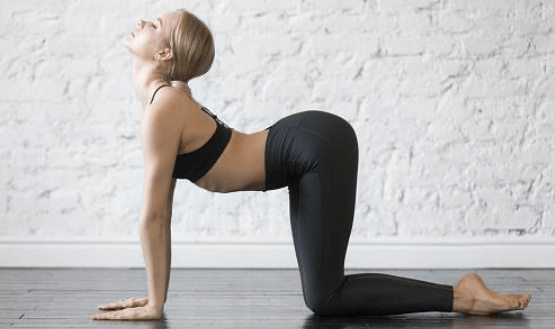
The cat and cow pose is a bending asana of yoga. Here, you keep your palms and calves on the ground while raising your arms and thighs. After that, it involves a series of extensions and flexion of the spine with a neutral spine position in between.
Repeating marjaiasana/bitilasana 5 to 10 times a day can help relieve backaches, improve neck, back, and shoulder flexibility, and enhance body-mind coordination.
2. Vrikshasana (Tree Pose)
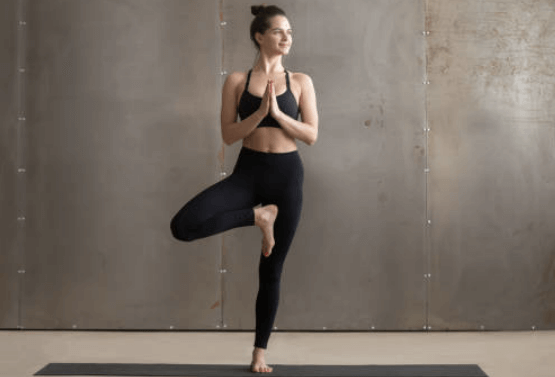
A tree pose is a balancing posture that involves standing straight, putting one of your feet on the other thighs by bending the knees, and raising your arms above your head or in front of the chest in a prayer position. After keeping the position for 30 seconds, you can switch the leg and go for 3-5 sets.
Vrikshasana boosts self-confidence by telling you to stand tall and strong like a tree. Additionally, it improves balance, tones muscles, and strengthens the body.
3. Bujangasana (Cobra Pose)
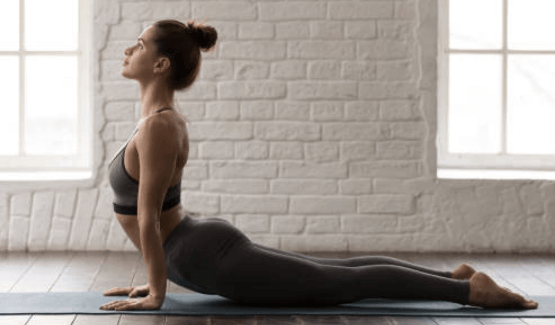
Cobra pose is a bending posture that involves lying prone on the yoga mat, placing the palms flat on the floor at the level of your lower abdomen, then raising the upper side of your body above the ground.
Bujangasana helps relieve backache, improve spinal posture, and open the chest. So, if you want to learn back-bending postures, starting with the cobra pose is an excellent option.
4. Baddha Konasana (Butterfly Pose)
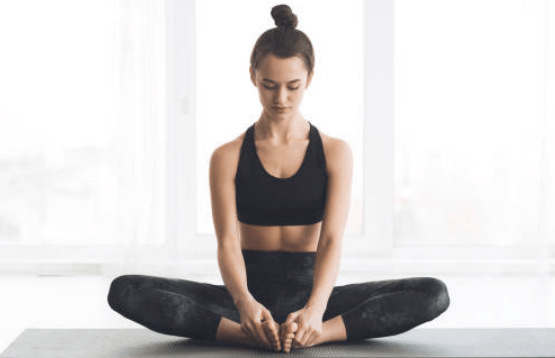
One of the simplest yoga asanas for beginners is the butterfly pose, a sitting posture. Here, you sit on the mat with your spine straight, both soles touching each other with bent knees, arms straight, and elbows touching the mid-thighs.
Baddha Konasana focuses on the muscles of the lower body including the thighs, hips, lower back, and abdomen along with increased flexibility of the spine. Moreover, it improves the health of the gut and relieves constipation and indigestion.
5. Virabhadrasana I (Warrior Pose I)
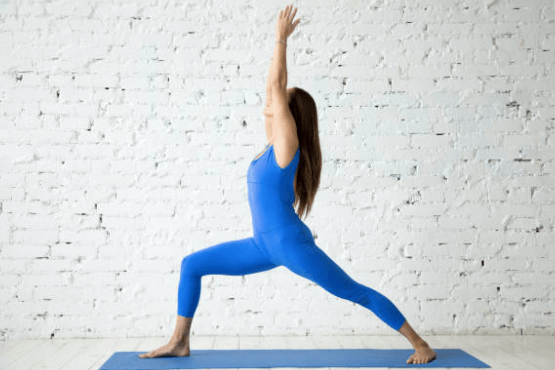
Warrior I pose is a standing and the primary posture of the warrior poses. While it might seem a little complex, it is easy to perform. Virabhadrasana boosts your inner strength and helps you overcome fears in addition to improving flexibility and balance.
To do warrior pose I, stand still, move your right leg forward and bend your in a way that your thigh comes parallel to the floor, and raise your arms above your head. Then move the shoulder blade backward and place your left foot behind your back as well.
6. Kumbhakasana (Plank Pose)
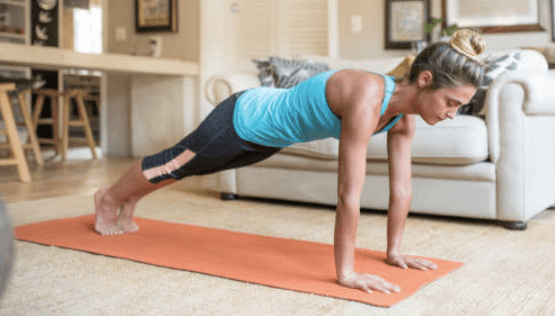
The plank pose is a balancing asana that builds core strength. Just like a standard plank, you need to stay on the floor with all your hands and feet touching the ground in a way that they are at a shoulder’s length apart. After that, raise your body and look downwards in a way that your neck and spine come in a straight line.
Kumbhakasana improves metabolism, physical coordination, muscle definition, and mental health. Moreover, it strengthens the abdominal muscles, builds abs, and improves balance.
7. Balasana (Child Pose)
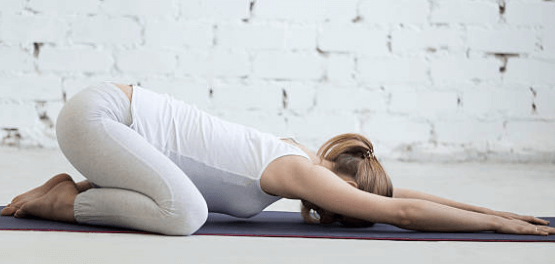
The child’s pose is a resting posture that works well for beginners. To do Balsana pose, sit on the yoga mat in a way that your knees are bent and your big toe is meeting in the midline with thighs apart. Then place the forehead on the ground and straighten your arms while touching the floor with the palms.
Balasana is a perfect exercise to stretch your ankles, reduce pelvic tension, straighten the spine, open the hips, and improve blood flow to the neck and brain.
8. Dandasana (Staff Pose)
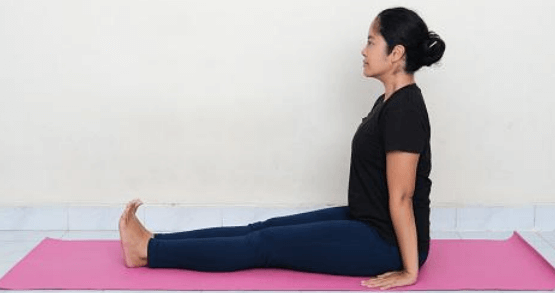
Staff pose is a sitting yoga asana in which you sit maximally using your hip bones. To expertise, the posture, sit on the mat with the legs extended forward in a way that your heels touch the floor and your feet are fully flexed. Then straighten your arms and keep your palms on the ground with the back stretched.
The best thing about tadasana is it increases the resistance to back and hip injuries, flexes shoulders and chest, improves body posture, and relieves spinal issues.
9. Malasana (Garland Pose)
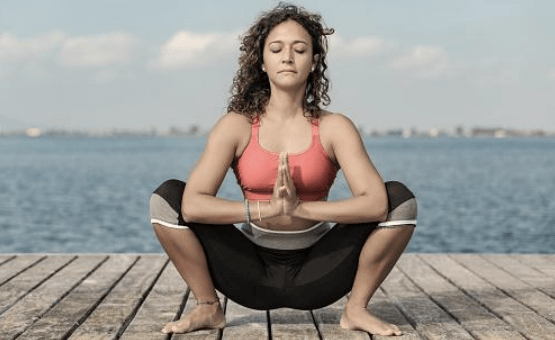
Garland pose is a sitting yoga asana that involves shifting from a mountain pose to a squatting position. So, start with standing still in a mountain pose, then move downward so that your body is in a lower squat position, and lastly bring your hands together in form of a chest. Do not forget to keep the spine straight during the whole process.
Malasana is an ideal prenatal yoga position. Moreover, it aids digestion, tones the belly, builds calves and thigh muscles, opens hip joints, and strengthens the pelvic region.
10. Shavasana (Corpse Pose)
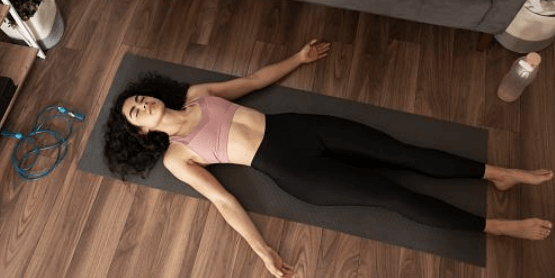
Want to improve your health while lying like a corpse? Shavasana got you. In corpse pose, just lie straight on your mat and open the legs and arms. Then relax. Release all the tension from muscles and do not make any effort to contract the muscles.
The corpse pose focuses more on the mental state than the body. It helps to release stress, ameliorate anxiety, decrease muscle tension, and relax the body. Moreover, it lowers blood pressure and heart rate.
11. Tadasana (Mountain Pose)
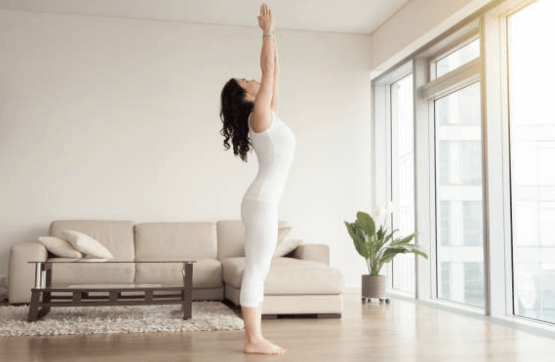
Lastly, we have the easiest asana for you. It is a standing posture, the mountain pose. The mountain pose starts with standing straight so that your big toes are touching and your heels are apart. Then, you should lift your toes and fan them out. During this, you can either raise your arms overhead or keep them on the sides.
Tadasana is the best pose for relieving sciatic pain. It also improves coordination, posture, blood circulation, and flexibility.
Conclusion
Yoga is an outstanding exercise for people who are not into intense gym workouts but want to stay fit. There is a huge variety of yoga asanas, including standing poses, sitting poses, resting poses, balancing poses, and bending poses. Some asanas are also combinations of two or more poses.
So, to help you begin your fitness journey, we prepared a list of the most beginner-friendly yoga asanas. You only need a comfortable space and a mat to perform these poses. An important thing while practicing any pose of yoga is to connect your mind, body, and soul.
So, to get the best of yoga, you should focus on keeping your position correct and breathing deeply while preventing your mind from going astray.

 By myulikeadmin
By myulikeadmin



